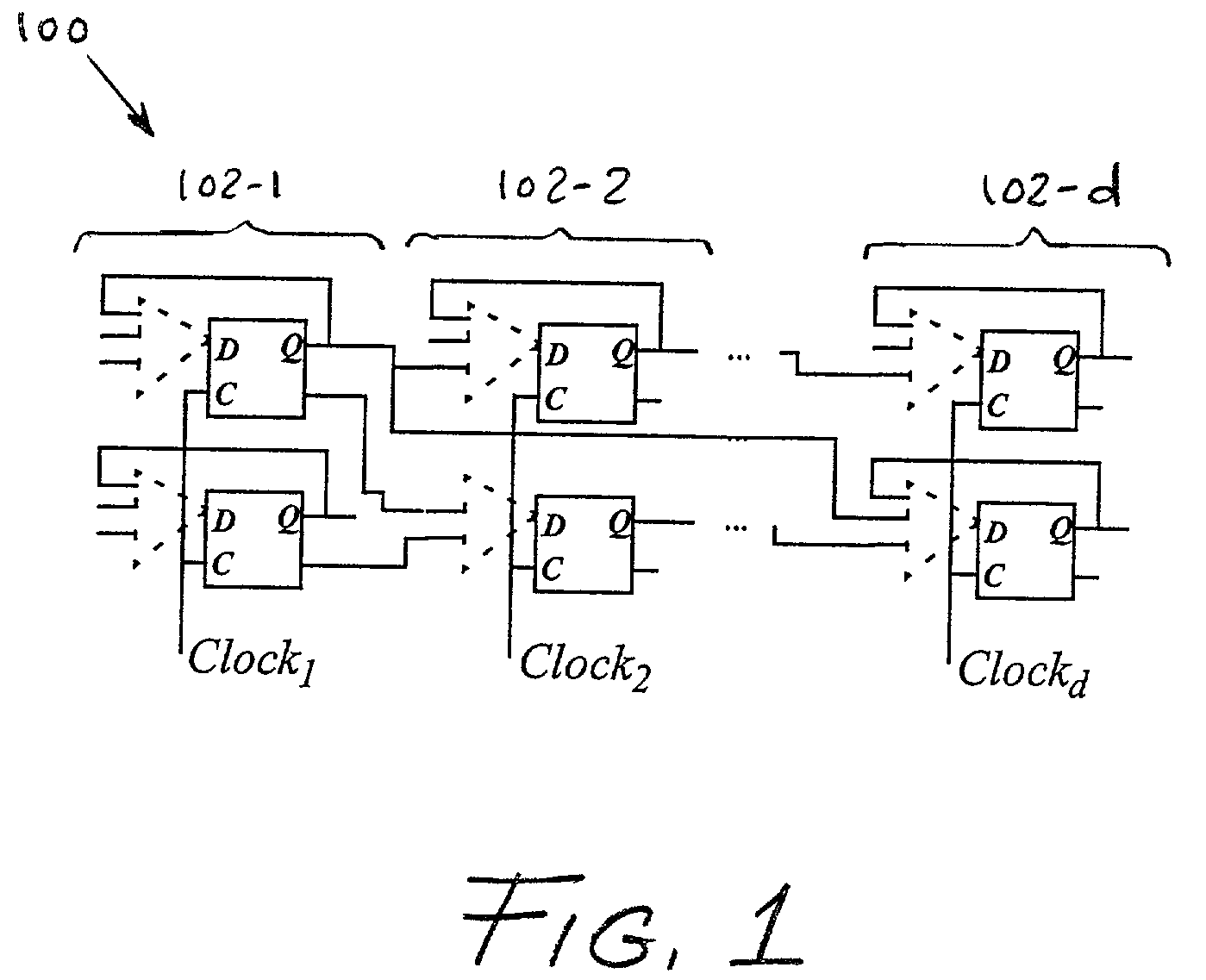Sequential test pattern generation using clock-control design for testability structures
a clock-control design and sequential circuit technology, applied in the direction of generating/distributing signals, pulse techniques, instruments, etc., can solve the problems of poor fault coverage results, high computational cost, and high overhead of automatic test pattern generation (atpg) for sequential circuits, so as to achieve no delay penalties and small overhead area
- Summary
- Abstract
- Description
- Claims
- Application Information
AI Technical Summary
Benefits of technology
Problems solved by technology
Method used
Image
Examples
Embodiment Construction
[0026]The present invention will be illustrated herein using exemplary sequential circuits. It should be understood, however, that the techniques of the invention can be applied to any desired type of sequential circuit. The term “register” as used herein is intended to include any arrangement of one or more flip-flops (FFs) or other circuit storage elements. The term “freezing” as used herein in conjunction with a clock signal refers to any technique for interrupting or otherwise stopping the clock signal.
[0027]The present invention provides improved techniques for performing automatic test pattern generation (ATPG) that are particularly well-suited for use with sequential circuits. More particularly, the invention in the illustrative embodiments to be described provides improved design for testability (DFT) structures and a corresponding ATPG process. Advantageously, the DFT structures of the present invention do not introduce any significant delay penalty, have a very small area ...
PUM
 Login to View More
Login to View More Abstract
Description
Claims
Application Information
 Login to View More
Login to View More - R&D
- Intellectual Property
- Life Sciences
- Materials
- Tech Scout
- Unparalleled Data Quality
- Higher Quality Content
- 60% Fewer Hallucinations
Browse by: Latest US Patents, China's latest patents, Technical Efficacy Thesaurus, Application Domain, Technology Topic, Popular Technical Reports.
© 2025 PatSnap. All rights reserved.Legal|Privacy policy|Modern Slavery Act Transparency Statement|Sitemap|About US| Contact US: help@patsnap.com



